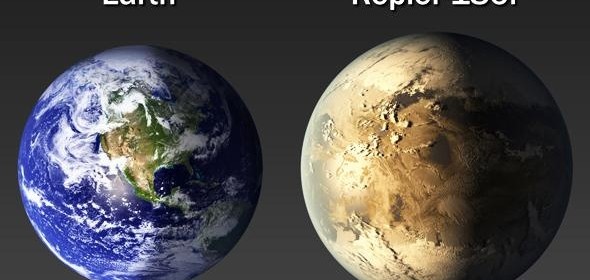The most Earth-like planet yet

Have we found Earth’s twin? For the first time, astronomers have identified a planet outside our solar system that is both Earth-size and orbits its star in the so-called Goldilocks zone, where temperatures may be “just right” for supporting liquid water—and, therefore, life. Researchers discovered the planet while reviewing data from NASA’s Kepler space telescope, which has spent the past five years hunting for habitable worlds beyond our solar system.
The new discovery, known as Kepler 186f, is less than 500 light-years away and part of a five-planet system orbiting a red dwarf star in the constellation Cygnus. While astronomers cannot confirm the presence of water or detect a protective atmosphere, they have calculated that 186f is just 10 percent bigger than Earth and circles its sun every 130 days. Since similarly sized planets in our solar system are made of rock and iron, scientists say 186f is likely to have a rocky surface.
What’s more, red dwarfs—which are cooler, dimmer, and smaller than our sun—are among the most common stars in the galaxy, raising the possibility that many more such an artists conception of Kepler 186f worlds are out there. “This is really a tip-of-the-iceberg discovery” Jason Rowe of the SETI Institute tells the Los Angeles Times. “We can infer that other ones are likely to exist.”

 Print
Print